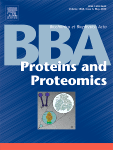 Biochimica et biophysica acta. Proteins and proteomics, 1868(3), pp. 140348, 2020
Biochimica et biophysica acta. Proteins and proteomics, 1868(3), pp. 140348, 2020
Adriano Alves Stefanello, Marco Aurélio Schuler de Oliveira, Emanuel Maltempi Souza, Fábio Oliveira Pedrosa, Leda Satie Chubatsu, Luciano Fernandes Huergo, Ray Dixon, Rose Adele Monteiro (2020)
Abstract
Herbaspirillum seropedicae is a plant growth promoting bacterium that is able to fix nitrogen and to colonize the surface and internal tissues of important crops. Nitrogen fixation in H. seropedicae is regulated at the transcriptional level by the prokaryotic enhancer binding protein NifA. The activity of NifA is negatively affected by oxygen and positively stimulated by interaction with GlnK, a PII signaling protein that monitors intracellular levels of the key metabolite 2-oxoglutarate (2-OG) and functions as an indirect sensor of the intracellular nitrogen status. GlnK is also subjected to a cycle of reversible uridylylation in response to intracellular levels of glutamine. Previous studies have established the role of the N-terminal GAF domain of NifA in intramolecular repression of NifA activity and the role of GlnK in relieving this inhibition under nitrogen-limiting conditions. However, the mechanism of this control of NifA activity is not fully understood. Here, we constructed a series of GlnK variants to elucidate the role of uridylylation and effector binding during the process of NifA activation. Our data support a model whereby GlnK uridylylation is not necessary to activate NifA. On the other hand, binding of 2-OG and MgATP to GlnK are very important for NifA activation and constitute the most important signal of cellular nitrogen status to NifA.
DOI: 10.1016/j.bbapap.2019.140348
Archives of Agronomy & Soil Science, 2020
Farley Alexandre da Fonseca Bredaa, Gabriela Cavalcanti Alvesa, Bruna Daniela Ortiz Lopeza, Alison Rocha de Aragãoa, Adelson Paulo Araújoa and Veronica Massena Reis
Abstract
This work intended to evaluate the contribution of single inoculation of diazotropic bacteria Herbaspirillum seropedicae or Azospirillum brasilense on growth and yield of maize crop at different levels of N fertilization. Two field experiments were carried out in the summer and winter seasons. Factorial design combined four fertilization levels (0, 50, 100 and 150 kg N ha−1) and three seed inoculations (non-inoculation, strains Hs-ZAE94 or Ab-Sp245), with four replications. Shoot dry matter, leaf area index, and N accumulation were evaluated in weekly samplings, and grain yield measured at maturity. Most expressive responses of inoculation were observed in the summer crop, with minor effects in the winter crop when growth and yield were lower. In the summer, inoculation increased shoot dry matter and leaf area of maize plants, enhancing crop growth rate, and increased N accumulated by shoots, particularly at low levels of N supply. In the summer, Hs-ZAE94 increased grain yield at the levels of 0, 50 and 100 kg N ha−1, and Ab-Sp245 at 100 kg N ha−1, as compared to non-inoculation. Inoculation with Hs-ZAE94 associated with 50 kg N ha−1 provided similar grain yield than the non-inoculation with 150 kg N ha−1, improving N use efficiency.
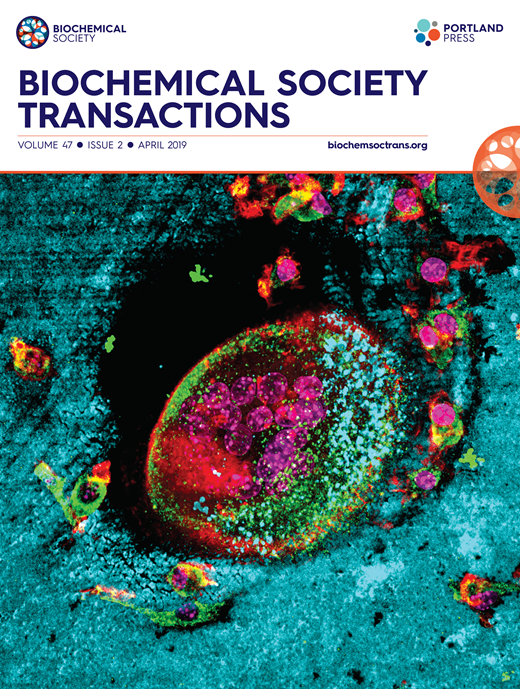 Biochemical Society transactions, 47(2), pp. 603-614, 2019
Biochemical Society transactions, 47(2), pp. 603-614, 2019
Manipulating nitrogen regulation in diazotrophic bacteria for agronomic benefit.
Marcelo Bueno Batista, Ray Dixon.
Abstract
Biological nitrogen fixation (BNF) is controlled by intricate regulatory mechanisms to ensure that fixed nitrogen is readily assimilated into biomass and not released to the environment. Understanding the complex regulatory circuits that couple nitrogen fixation to ammonium assimilation is a prerequisite for engineering diazotrophic strains that can potentially supply fixed nitrogen to non-legume crops. In this review, we explore how the current knowledge of nitrogen metabolism and BNF regulation may allow strategies for genetic manipulation of diazotrophs for ammonia excretion and provide a contribution towards solving the nitrogen crisis.
DOI: 10.1042/BST20180342
Archives of microbiology, 201(4), pp. 547-558. 2019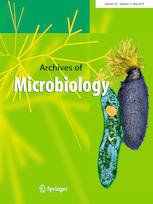
Farley Alexandre da Fonseca Breda, Thamires Ferreira Rodrigues da Silva, Silvana Gomes dos Santos, Gabriela Cavalcanti Alves & Veronica Massena Reis
Abstract
Maize is highly responsive to the application of nitrogen to achieve high productivity. Inoculation with diazotrophic bacteria can improve plant growth with low N fertilization. The objective was to evaluate the inoculation of two species of diazotrophs on N metabolism in maize plants, in the presence of two concentrations of nitrogen in a hydroponic system. A factorial arrangement composed of two N levels (3.0 and 0.3 mM), with the presence of Hs—Herbaspirillum seropedicae, and Ab—Azospirillum brasilense or not. The parameters used were dry mass; N, P, and K accumulation; nitrate reductase activity; soluble fractions in roots and leaves. The inoculation altered the N metabolism and promoted greater development of maize plants, as well as a higher accumulation of P and K in the shoots. A more intensive process of N assimilation was evidenced when the plants were inoculated with H. seropedicae, leading to increased levels of NO3− and reduced N-amino, sugars, and NH4+ in leaves associated with high N level, opposite of A. brasilense.
DOI: 10.1007/s00203-018-1594-z
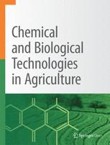
Chemical and Biological Technologies in Agriculture, 1, 2019
Natália O. A. Canellas, Fábio L. Olivares & Luciano P. Canellas
Abstract
Background
The negative consequences of industrial agriculture greatly affect human health and the environment. Debating our dietary requirements and challenging the means of food production are necessary. In the first years of transitioning to agroecological production, crop yields normally decrease. Humic acids and beneficial bacteria used as plant growth promoters can be helpful during this stressful time. Metabolite target identification will aid in increasing plant responses to these agents.
Materials
We evaluated the metabolite fingerprints of maize and sugarcane seedlings after 5 days of treatment with like-humic acids isolated from vermicompost coupled with a combined Herbaspirillum seropedicae and Gluconacetobacter diazotrophicus application. The hydromethanolic foliar extracts were submitted for 1H nuclear magnetic resonance analysis, and the data were explored using chemometrics procedures. After the preliminary screening, the extracts were analyzed by gas chromatography coupled to time of flight mass spectrometry to identify metabolite targets.
Results
The biostimulant significantly changed the metabolic fingerprints independent of the plant species. The main proton spectral regions changed by biostimulant use were from 0 to 2.5 ppm and 3.5 to 5 ppm, as revealed by a principal component analysis. The main signals corresponded to amino acid, sugar and organic acid chemical shifts. Aspartic acid was the amino acid present in greatest amounts in both leaf extracts. A significant change occurred in the region normally attributed to (CHn)-protons bound to electron-withdrawing groups, such as carboxyls from mucic, ribonic and saccharic acids derived from sugars and aromatic structures from shikimic acid, 4-hydroxybenzoate and 3,4-dihydroxycinnamic acid. The main organic acids altered by the biostimulant were representatives of the tricarboxylic acid cycle (citric, isocitric, aconitic, malic and fumaric acids). Linoleic and myristic acids, 1-mono palmitin and tocopherol were the major lipid components found at greater levels in the treated leaf extracts. Compounds from the oxidative end products of ascorbic acid metabolism, like threonic, isothreonic and oxalic acids, are putative biomarkers of the biostimulant as are the cyclic polyol identified as quinic acid and trehalose, a disaccharide involved in plant stress responses.
Conclusion
The biostimulant induced significant changes in the metabolite fingerprints of maize and sugarcane seedlings as revealed by nuclear magnetic resonance. Both primary and secondary metabolisms were affected, and 22 putative biomarkers associated with the biostimulant-treated plant phenotype were identified. This agrees with previous work indicating that the stimulation of primary and secondary metabolisms was partially responsible for biostimulant effects on non-leguminous plants. Moreover, these metabolite targets could be used to genetically manipulate metabolic pathways to aid Poaceae breeding programs in increasing biostimulative responses.
DOI: 10.1186/s40538-019-0153-4
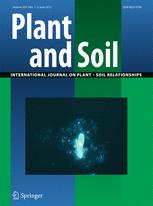 Plant and Soil, Vol 355, 2019
Plant and Soil, Vol 355, 2019
Santos, S.S.; Ribeiro, F.S.; Alves, G.C.; Santos, L.A.; Reis, V.M
Abstract
Aims
We examined the influence of inoculation with five species/strains of diazotrophic bacteria on the modulation of two enzymes involved in the assimilation of N and on the soluble N fractions in the sugarcane varieties RB867515 (adapted for low fertility soils) and IACSP95-5000 (adapted for medium to high fertility soils) under high- (3 mM) and low (0.3 mM)-N conditions in hydroponic cultivation for 59 days.
Methods
The sugarcane plants were produced in three steps to obtain the hydroponic cultivation: the supply of 3 mM N for 30 days (first harvest), N depletion for 72 h (second harvest), and cultivation in high- and low-N conditions over 26 days (final harvest). Inoculation was performed by immersion of the minisetts in a diluted solution of five diazotrophic bacteria. After the final harvest, plants were divided into roots and shoots to assess their dry weight and N, P, and K accumulation.
Results
The variety played an important role in the interaction with diazotrophs, each showing distinct behavior in the activity of their N-assimilation enzymes. The nitrate reductase activity (NRa—EC 1.7.1.1) was increased in var. RB867515 by 26% in the shoots and by 48% in the roots after 72 h under N depletion, while var. IACSP95-5000 showed a reduced enzymatic activity in the roots (by 62%) but not in the shoots. Under high-N conditions, the inoculated IACSP95-5000 plants showed 31% higher glutamine synthetase activity (GSa—EC 6.31.2) compared with 19% in RB867515. Under low-N conditions, the GSas were 21% and 16% higher in the inoculated RB867515 and IACSP95-5000 plants, respectively, compared with that of the control. The content of nitrogen in the form of nitrate (N-nitrate) confirmed these varietal differences, but the soluble sugar content did not.
Conclusions
The varieties utilized N sources differently, and inoculation modified the activity of two N-assimilation enzymes as well as the biomass accumulation, with the highest improvement seen in the low fertility-adapted variety RB867515; it showed a greater response to inoculation compared with that of the high fertility-adapted variety IACSP95-5000, with an increase in biomass and nutrient accumulation (N, P, K), especially when cultivated under low-N conditions. This suggests that the best response to inoculation with diazotrophs will be achieved using low fertility-adapted sugarcane varieties under low-N conditions.
DOI: 10.1007/s11104-019-04101-1
Genes, 9(8), 389 2018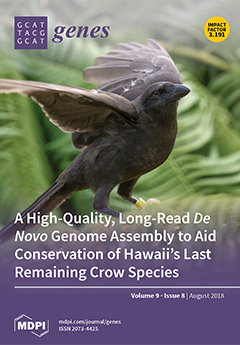
Paulina Estrada-de los Santos1,*,†,Marike Palmer2,†,Belén Chávez-Ramírez1 ,Chrizelle Beukes2, Emma T. Steenkamp2, Leah Briscoe3, Noor Khan3 ,Marta Maluk4, Marcel Lafos4, Ethan Humm3, Monique Arrabit3, Matthew Crook5, Eduardo Gross6, Marcelo F. Simon7, Fábio Bueno Dos Reis Junior8, William B. Whitman9, Nicole Shapiro10, Philip S. Poole11, Ann M. Hirsch3,*,Stephanus N. Venter2,* and Euan K. James4,*.
1Instituto Politécnico Nacional, Escuela Nacional de Ciencias Biológicas, 11340 Cd. de Mexico, Mexico
2Department of Microbiology and Plant Pathology, Forestry and Agricultural Biotechnology Institute, University of Pretoria, Pretoria 0083, South Africa
3Department of Molecular, Cell, and Developmental Biology and Molecular Biology Institute, University of California, Los Angeles, CA 90095, USA
4The James Hutton Institute, Dundee DD2 5DA, UK
5450G Tracy Hall Science Building, Weber State University, Ogden, 84403 UT, USA
6Center for Electron Microscopy, Department of Agricultural and Environmental Sciences, Santa Cruz State University, 45662-900 Ilheus, BA, Brazil
7Embrapa CENARGEN, 70770-917 Brasilia, Distrito Federal, Brazil
8Embrapa Cerrados, 73310-970 Planaltina, Distrito Federal, Brazil
9Department of Microbiology, University of Georgia, Athens, GA 30602, USA
10DOE Joint Genome Institute, Walnut Creek, CA 94598, USA
11Department of Plant Sciences, University of Oxford, South Parks Road, Oxford OX1 3RB, UK
*Authors to whom correspondence should be addressed.†These authors made an equal contribution.
Abstract
Burkholderia sensu lato is a large and complex group, containing pathogenic, phytopathogenic, symbiotic and non-symbiotic strains from a very wide range of environmental (soil, water, plants, fungi) and clinical (animal, human) habitats. Its taxonomy has been evaluated several times through the analysis of 16S rRNA sequences, concantenated 4–7 housekeeping gene sequences, and lately by genome sequences. Currently, the division of this group into Burkholderia, Caballeronia, Paraburkholderia, and Robbsia is strongly supported by genome analysis. These new genera broadly correspond to the various habitats/lifestyles of Burkholderia s.l., e.g., all the plant beneficial and environmental (PBE) strains are included in Paraburkholderia (which also includes all the N2-fixing legume symbionts) and Caballeronia, while most of the human and animal pathogens are retained in Burkholderia sensu stricto. However, none of these genera can accommodate two important groups of species. One of these includes the closely related Paraburkholderia rhizoxinica and Paraburkholderia endofungorum, which are both symbionts of the fungal phytopathogen Rhizopus microsporus. The second group comprises the Mimosa-nodulating bacterium Paraburkholderia symbiotica, the phytopathogen Paraburkholderia caryophylli, and the soil bacteria Burkholderia dabaoshanensis and Paraburkholderia soli. In order to clarify their positions within Burkholderia sensu lato, a phylogenomic approach based on a maximum likelihood analysis of conserved genes from more than 100 Burkholderia sensu lato species was carried out. Additionally, the average nucleotide identity (ANI) and amino acid identity (AAI) were calculated. The data strongly supported the existence of two distinct and unique clades, which in fact sustain the description of two novel genera Mycetohabitans gen. nov. and Trinickia gen. nov. The newly proposed combinations are Mycetohabitans endofungorum comb. nov., Mycetohabitansrhizoxinica comb. nov., Trinickia caryophylli comb. nov., Trinickiadabaoshanensis comb. nov., Trinickia soli comb. nov., and Trinickiasymbiotica comb. nov. Given that the division between the genera that comprise Burkholderia s.l. in terms of their lifestyles is often complex, differential characteristics of the genomes of these new combinations were investigated. In addition, two important lifestyle-determining traits—diazotrophy and/or symbiotic nodulation, and pathogenesis—were analyzed in depth i.e., the phylogenetic positions of nitrogen fixation and nodulation genes in Trinickia via-à-vis other Burkholderiaceae were determined, and the possibility of pathogenesis in Mycetohabitans and Trinickia was tested by performing infection experiments on plants and the nematode Caenorhabditis elegans. It is concluded that (1) T. symbiotica nif and nod genes fit within the wider Mimosa-nodulating Burkholderiaceae but appear in separate clades and that T. caryophyllinif genes are basal to the free-living Burkholderia s.l. strains, while with regard to pathogenesis (2) none of the Mycetohabitans and Trinickia strains tested are likely to be pathogenic, except for the known phytopathogen T. caryophylli.
DOI: 10.3390/genes9080389

Environmental microbiology 18(8), pp. 2343-56, 2018
Molecular adaptations of Herbaspirillum seropedicae during colonization of the maize rhizosphere
Eduardo Balsanelli, Michelle Z Tadra‐Sfeir, Helisson Faoro, Vânia CS Pankievicz, Valter A de Baura, Fábio O Pedrosa, Emanuel M de Souza, Ray Dixon, Rose A Monteiro
Abstract
Molecular mechanisms of plant recognition and colonization by diazotrophic bacteria are barely understood. Herbaspirillum seropedicae is a Betaproteobacterium capable of colonizing epiphytically and endophytically commercial grasses, to promote plant growth. In this study, we utilized RNA‐seq to compare the transcriptional profiles of planktonic and maize root‐attached H. seropedicae SmR1 recovered 1 and 3 days after inoculation. The results indicated that nitrogen metabolism was strongly activated in the rhizosphere and polyhydroxybutyrate storage was mobilized in order to assist the survival of H. seropedicae during the early stages of colonization. Epiphytic cells showed altered transcription levels of several genes associated with polysaccharide biosynthesis, peptidoglycan turnover and outer membrane protein biosynthesis, suggesting reorganization of cell wall envelope components. Specific methyl‐accepting chemotaxis proteins and two‐component systems were differentially expressed between populations over time, suggesting deployment of an extensive bacterial sensory system for adaptation to the plant environment. An insertion mutation inactivating a methyl‐accepting chemosensor induced in planktonic bacteria, decreased chemotaxis towards the plant and attachment to roots. In summary, analysis of mutant strains combined with transcript profiling revealed several molecular adaptations that enable H. seropedicae to sense the plant environment, attach to the root surface and survive during the early stages of maize colonization.

Frontiers in microbiology, 9, pp. 472. 2018
PHB Biosynthesis Counteracts Redox Stress in Herbaspirillum seropedicae
Marcelo B. Batista¹,²,†, Cícero S./ Teixeira¹†, Michelle Z. T. Sfeir¹, Luis P. S. Alves¹, Glaucio Valdameri³, Fabio de Oliveira Pedrosa¹, Guilherme L. Sassaki¹, Maria B. R. Steffens¹, Emanuel M. de Souza¹, Ray Dixon² and Marcelo Müller-Santos¹*.
¹Department of Biochemistry and Molecular Biology, Universidade Federal do Paraná, Curitiba, Brazil ²Department of Molecular Microbiology, John Innes Centre, Norwich, United Kingdom ³Department of Clinical Analysis, Universidade Federal do Paraná, Curitiba, Brazil
Abstract
The ability of bacteria to produce polyhydroxyalkanoates such as poly(3-hydroxybutyrate) (PHB) enables provision of a carbon storage molecule that can be mobilized under demanding physiological conditions. However, the precise function of PHB in cellular metabolism has not been clearly defined. In order to determine the impact of PHB production on global physiology, we have characterized the properties of a ΔphaC1 mutant strain of the diazotrophic bacterium Herbaspirillum seropedicae. The absence of PHB in the mutant strain not only perturbs redox balance and increases oxidative stress, but also influences the activity of the redox-sensing Fnr transcription regulators, resulting in significant changes in expression of the cytochrome c-branch of the electron transport chain. The synthesis of PHB is itself dependent on the Fnr1 and Fnr3 proteins resulting in a cyclic dependency that couples synthesis of PHB with redox regulation. Transcriptional profiling of the ΔphaC1 mutant reveals that the loss of PHB synthesis affects the expression of many genes, including approximately 30% of the Fnr regulon.
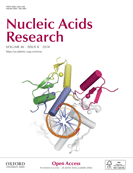 Nucleic acids research, 46(8), pp. 3953-3966, 2018
Nucleic acids research, 46(8), pp. 3953-3966, 2018
Marcelo Bueno Batista, Govind Chandra, Rose Adele Monteiro, Emanuel Maltempi de Souza, Ray Dixon
Abstract
Bacteria adjust the composition of their electron transport chain (ETC) to efficiently adapt to oxygen gradients. This involves differential expression of various ETC components to optimize energy generation. In Herbaspirillum seropedicae, reprogramming of gene expression in response to oxygen availability is controlled at the transcriptional level by three Fnr orthologs. Here, we characterised Fnr regulons using a combination of RNA-Seq and ChIP-Seq analysis. We found that Fnr1 and Fnr3 directly regulate discrete groups of promoters (Groups I and II, respectively), and that a third group (Group III) is co-regulated by both transcription factors. Comparison of DNA binding motifs between the three promoter groups suggests Group III promoters are potentially co-activated by Fnr3–Fnr1 heterodimers. Specific interaction between Fnr1 and Fnr3, detected in two-hybrid assays, was dependent on conserved residues in their dimerization interfaces, indicative of heterodimer formation in vivo. The requirements for co-activation of the fnr1 promoter, belonging to Group III, suggest either sequential activation by Fnr3 and Fnr1 homodimers or the involvement of Fnr3–Fnr1 heterodimers. Analysis of Fnr proteins with swapped activation domains provides evidence that co-activation by Fnr1 and Fnr3 at Group III promoters optimises interactions with RNA polymerase to fine-tune transcription in response to prevailing oxygen concentrations.
doi: 10.1093/nar/gky142
Archives of microbiology, 201(9), pp. 1313-1316, 2019
Trinickia dabaoshanensis sp. nov., a new name for a lost species
Paulina Estrada-de los Santos, Marike Palmer, Emma T. Steenkamp, Marta Maluk, Chrizelle Beukes, Ann M. Hirsch, Euan K. James & Stephanus N. Venter
Abstract
“Burkholderia dabaoshanensis” was described in 2012. Although the name was effectively published, it could not be validly published, because the description provided in the original paper did not comply with the Rule 27 (2) (c) of the Bacterial Code. The Code requiresthat the properties of the taxon form part of the protologue. As the name of this species does not have standing in nomenclature, the recently published new combination Trinickia dabaoshanensis could also not be validly published. The current proposal attempts to rectify the situation by providing the information required to meet the criteria stipulated in Rule 27 for valid publication.
DOI: 10.1007/s00203-019-01703-2

Plant and Soil, 2019
Pablo R. Hardoim, Thais L. G. de Carvalho, Helkin G. F. Ballesteros, Daniel Bellieny-Rabelo, Cristian A. Rojas, Thiago M. Venancio, Paulo C. G. Ferreira & Adriana S. Hemerly.
Abstract
Aims
We applied for the first time a high-throughput transcriptome approach to elucidate biochemical and physiological mechanisms controlling early events in the interaction between maize seedlings and different beneficial diazotrophic bacteria.
Methods
mRNA transcriptomes from maize (Zea mays L.) seedlings were characterized seven days after inoculation with Azospirillum brasilense sp245 and Herbaspirillum seropedicae HRC54. The expression profiles of selected genes were validated by quantitative reverse transcription–polymerase chain reaction analysis.
Results
Transcriptome profiling revealed a total of 764 and 3595 differentially expressed genes (DEGs) in maize when exclusively associated with A. brasilense and H. seropedicae, respectively, whereas 455 DEGs were shared by both treatments. Our results support the modulation of the host nitrogen metabolism and phytohormone responses by both diazotrophic bacteria as well as distinct activation of host immune responses.
Conclusions
Diazotrophic bacteria modulate maize metabolism, with some common responses to both beneficial bacteria, while others are specific to each bacterial species. This study provides a valuable contribution on how these beneficial bacteria might amend host metabolism to improve growth and fitness.
DOI: 10.1007/s11104-019-04193-9
Plant and Soil, (2017)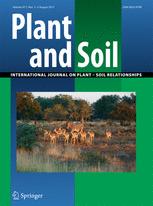
Luciano Pasqualoto Canellas & Fabio Lopes Olivares
Abstract
Background and aims
The adaptation of plants to land ecosystems involves complex rhizosphere interactions between organic matter and microbial communities. Border cells (BC) constitute the first living boundary in plant-soil ecosystems and play an important role in environmental sensing and signaling in response to different biotic and abiotic conditions. In this study, we evaluate the effect of humic acid on the release of BCs and its impact on the colonization of Herbaspirillum seropedicae at maize root tips.
Methods
Maize seedlings (1.0 ± 0.05 cm root length) were immersed for 48 h in solutions with different concentrations of humic acid (0, 12, 42, 143 and 500 mg L−1). Light and scanning electron microscopy were used to evaluate the structural interaction between border cells and H. seropedicae at the root tips.
Results
The release of BCs from root tips was significantly increased by humic acid (HA) application and exhibited a bell-shaped dose-response curve; the highest release of BCs occurred at 143 mg HA L−1 and was confirmed by microscopy. The colonization of roots by H. seropedicae strain RAM10 (tagged with green fluorescent protein, GFP) was monitored by epifluorescence microscopy with and without exogenous humic acid (143 mg L−1). Increased BC release resulted in a high density of diazotrophic bacteria at root tips, and bacteria sometimes aggregated with mucilage and humic acid particles, thus enhancing their viability. Increased BC numbers in response to humic acid might explain previous studies showing a concomitant increase in H. seropedicae populations in the rhizosphere, rhizoplane, and endosphere of grasses.
Conclusions
The population of H. seropedicae strain RAM10 colonizing root caps and BCs increased in response to exogenous humic acids.
doi: 10.1007/s11104-017-3267-0
Chemical and Biological Technologies in Agriculture, 1, 2017
Silézio Ferreira da Silva, Fábio Lopes Olivares & Luciano Pasqualoto Canellas
Abstract
Background
The use of biostimulants in agriculture has demonstrated great potential but more consistent field results are required for wider farm acceptance. We evaluated different delivering methods for the biostimulant produced with plant growth-promoting bacteria mixed with humic acid-like substances isolated from vermicompost in the commercial sugarcane crop yield during 3 consecutive years.
Results
Foliar spray had a better performance than furrow application and the best result was obtained when the biostimulant was applied at 60 days after emergence, thus enhancing 37% of the stem yield when compared to control. In the first and second ratoons, the productivity increases 5 and 24%, respectively. The first ratoon was marked by severe drought stress that hit all the southeastern of Brazil. Moreover, the assay using strip plot design with a large parcel area confirms the promotion of sugarcane yields by biostimulant during two consecutive ratoons increasing 19 and 18% that represent 11 and 13 tons ha−1 more than the control. The use of biostimulant did not change soluble solid content and polarizable sugars in the sugarcane juice obtained from both experiments.
Conclusions
The biostimulant formulated with endophytic diazotrophic bacteria and humic acids represents a low-cost technology that increases the sugarcane yield with economic use of fertilizers to enhance crop yield.
DOI: 10.1186/s40538-017-0106-8

Environmental microbiology reports, 9(3), pp. 179-181, 2017
Ray Dixon, Anton Hartmann
Abstract
Plant associated nitrogen‐fixing bacteria are known to benefit the growth of various cereal and bioenergy crops although there has been considerable debate concerning the mechanisms involved in plant growth promotion and especially the contribution from biological nitrogen fixation (BNF). Nevertheless, there is good evidence in some cases that a substantial contribution of the nitrogen requirements of the plant can be provided by BNF under field conditions (Boddey et al., 1995; De Morais et al., 2012; Urquiaga et al., 2012). Moreover, in well‐defined laboratory conditions with model plant–bacterial combinations, BNF can support the N nutrition of the plant, particularly if the diazotrophic bacteria are engineered to excrete ammonia (Christiansen‐Weniger and Van Veen, 1991; Wood et al., 2001; Setten et al., 2013; Pankievicz et al., 2015; Fox et al., 2016; Santos et al., 2016).

Non-coding RNA, 3(4), 2017
Roles of Non-Coding RNA in Sugarcane-Microbe Interaction
Flávia Thiebaut1, Cristian A. Rojas2, Clícia Grativol3, Edmundo P. da R. Calixto1, Mariana R. Motta1, Helkin G. F. Ballesteros1, Barbara Peixoto1, Berenice N. S. De Lima1, Lucas M. Vieira4 ,Maria Emilia Walter 4, Elvismary M. De Armas5 ,Júlio O. P. Entenza5, Sergio Lifschitz5, Laurent Farinelli6, Adriana S. Hemerly1 and Paulo C. G. Ferreira1,
1Laboratório de Biologia Molecular de Plantas, Instituto de Bioquímica Médica Leopoldo de Meis, Universidade Federal do Rio de Janeiro, Rio de Janeiro 21941-901, Brazil
2Universidade Federal da INTEGRAÇÃO Latino-Americana, Foz do Iguaçu 85866-000, Brazil
3Laboratório de Química e Função de Proteínas e Peptídeos, Universidade Estadual do Norte Fluminense, Campos dos Goytacazes 28013-602, Brazil
4Departamento de Ciência da Computação, Universidade de Brasília, Brasília 70910-900, Brazil
5Departamento de Informática, Pontifícia Universidade Católica do Rio de Janeiro, Rio de Janeiro 22451-900, Brazil
6Fasteris SA, 1228 Plan-les-Ouates, Switzerland
Abstract
Studies have highlighted the importance of non-coding RNA regulation in plant-microbe interaction. However, the roles of sugarcane microRNAs (miRNAs) in the regulation of disease responses have not been investigated. Firstly, we screened the sRNA transcriptome of sugarcane infected with Acidovorax avenae. Conserved and novel miRNAs were identified. Additionally, small interfering RNAs (siRNAs) were aligned to differentially expressed sequences from the sugarcane transcriptome. Interestingly, many siRNAs aligned to a transcript encoding a copper-transporter gene whose expression was induced in the presence of A. avenae, while the siRNAs were repressed in the presence of A. avenae. Moreover, a long intergenic non-coding RNA was identified as a potential target or decoy of miR408. To extend the bioinformatics analysis, we carried out independent inoculations and the expression patterns of six miRNAs were validated by quantitative reverse transcription-PCR (qRT-PCR). Among these miRNAs, miR408—a copper-microRNA—was downregulated. The cleavage of a putative miR408 target, a laccase, was confirmed by a modified 5′RACE (rapid amplification of cDNA ends) assay. MiR408 was also downregulated in samples infected with other pathogens, but it was upregulated in the presence of a beneficial diazotrophic bacteria. Our results suggest that regulation by miR408 is important in sugarcane sensing whether microorganisms are either pathogenic or beneficial, triggering specific miRNA-mediated regulatory mechanisms accordingly.
DOI: 10.3390/ncrna3040025

Environmental microbiology reports, 9(3), pp. 223-238. 2017
Helisson Faoro, Rodrigo Rene Menegazzo, Federico Battistoni, Prasad Gyaneshwar, Fernanda P. do Amaral, Cecilia Taulé, Sydnee Rausch, Patricia Gonçalves Galvão, Cecilia de los Santos, Shubhajit Mitra, Gabriela Heijo, Shih‐Yi Sheu, Wen‐Ming Chen, Cintia Mareque, Michelle Zibetti Tadra‐Sfeir, J. Ivo Baldani, Marta Maluk, Ana Paula Guimarães, Gary Stacey, Emanuel M. de Souza, Fabio O. Pedrosa, Leonardo Magalhães Cruz, Euan K. James
Abstract
The genome of Azoarcus olearius DQS‐4T, a N2‐fixing Betaproteobacterium isolated from oil‐contaminated soil in Taiwan, was sequenced and compared with other Azoarcus strains. The genome sequence showed high synteny with Azoarcus sp. BH72, a model endophytic diazotroph, but low synteny with five non‐plant‐associated strains (Azoarcus CIB, Azoarcus EBN1, Azoarcus KH32C, A. toluclasticus MF63T and Azoarcus PA01). Average Nucleotide Identity (ANI) revealed that DQS‐4T shares 98.98% identity with Azoarcus BH72, which should now be included in the species A. olearius. The genome of DQS‐4T contained several genes related to plant colonization and plant growth promotion, such as nitrogen fixation, plant adhesion and root surface colonization. In accordance with the presence of these genes, DQS‐4T colonized rice (Oryza sativa) and Setaria viridis, where it was observed within the intercellular spaces and aerenchyma mainly of the roots. Although they promote the growth of grasses, the mechanism(s) of plant growth promotion by A. olearius strains is unknown, as the genomes of DQS‐4T and BH72 do not contain genes for indole acetic acid (IAA) synthesis nor phosphate solubilization. In spite of its original source, both the genome and behaviour of DQS‐4T suggest that it has the capacity to be an endophytic, nitrogen‐fixing plant growth‐promoting bacterium.
PMID:27893193 DOI: 10.1111/1758-2229.12502
Plant and Soil, 2017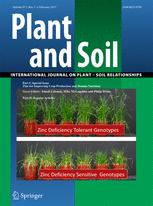
Luciano Pasqualoto Canellas & Fabio Lopes Olivares
Abstract
The adaptation of plants to land ecosystems involves complex rhizosphere interactions between organic matter and microbial communities. Border cells (BC) constitute the first living boundary in plant-soil ecosystems and play an important role in environmental sensing and signaling in response to different biotic and abiotic conditions. In this study, we evaluate the effect of humic acid on the release of BCs and its impact on the colonization of Herbaspirillum seropedicae at maize root tips.
Methods
Maize seedlings (1.0 ± 0.05 cm root length) were immersed for 48 h in solutions with different concentrations of humic acid (0, 12, 42, 143 and 500 mg L−1). Light and scanning electron microscopy were used to evaluate the structural interaction between border cells and H. seropedicae at the root tips.
Results
The release of BCs from root tips was significantly increased by humic acid (HA) application and exhibited a bell-shaped dose-response curve; the highest release of BCs occurred at 143 mg HA L−1 and was confirmed by microscopy. The colonization of roots by H. seropedicae strain RAM10 (tagged with green fluorescent protein, GFP) was monitored by epifluorescence microscopy with and without exogenous humic acid (143 mg L−1). Increased BC release resulted in a high density of diazotrophic bacteria at root tips, and bacteria sometimes aggregated with mucilage and humic acid particles, thus enhancing their viability. Increased BC numbers in response to humic acid might explain previous studies showing a concomitant increase in H. seropedicae populations in the rhizosphere, rhizoplane, and endosphere of grasses.
Conclusions
The population of H. seropedicae strain RAM10 colonizing root caps and BCs increased in response to exogenous humic acids.
DOI: 10.1007/s11104-017-3267-0
Plant and Soil, 2016 
K. F. D. N. Santos & V. R. Moure & V. Hauer & A. R. S Santos & L. Donatti & C. W. Galvão & F. O. Pedrosa & E. M. Souza & R. Wassem & M. B. R. Steffens
Abstract
In this work, an ammonium-excreting strain (HM053) of A. brasilense was further characterized genetically and biochemically, and its abilities to colonize and promote wheat growth were determined. Methods Immunoblot, reverse transcription-qPCR, and DNA sequencing were used for HM053 characterization. To analyze wheat-A. brasilense interaction nifH::gusA fusions in the wild-type FP2 (FP2-7) and HM053 (HM053-36) backgrounds were employed.
